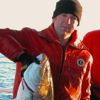
The Atlantic States Marine Fisheries Commission recognizes VIMS researcher Jim Gartland for his outstanding contributions to the field of fisheries science.

The Atlantic States Marine Fisheries Commission recognizes VIMS researcher Jim Gartland for his outstanding contributions to the field of fisheries science.
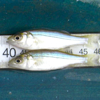
VIMS survey records average number of young-of-year stripers; scientists say rebound will help stabilize rockfish population after last year's Baywide low recruitment.
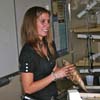
VIMS PERFECT/GK12 Fellow Jami Ivory brings fish anatomy out of a textbook and into the real world during a 7th-grade life science class at Booker T. Washington Middle School in Newport News.
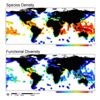
Tropical coral reefs have been long thought to be the areas of greatest marine biodiversity, but a new trait-based study of reef fishes reveals new hotspots of biodiversity.

Guided self-assessment and on-site consultation with a museum professional will help VIMS staff better serve both the scientific community and citizens of Virginia and the Chesapeake Bay watershed.
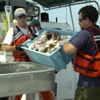
Ten-year study provides the first quantitative evidence on a bay-wide scale that oxygen-poor waters impact the distribution and abundance of fishes that live and feed near the Bay bottom.
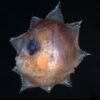
A dozen students visit VIMS for an intensive summer course on the microscopic world of fish larvae.
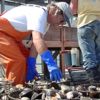
A new 5-year grant from the National Science Foundation will jumpstart an industry-university partnership to promote sustainable fisheries throughout the Mid-Atlantic and Gulf coast region.
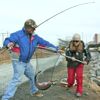
Program organizers acknowledge volunteers for tagging more than 31,600 fish in 2012, a new record.
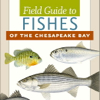
Reviewers note that new book "brings each species to life" and is an “indispensable resource for both anglers and students.”
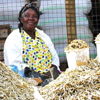
Visiting professor and W&M colleagues explore the link between conflict and food security within fishing communities around Africa's Lake Victoria.

Visiting professor and W&M colleagues explore the link between conflict and food security within fishing communities around Africa's Lake Victoria.

VIMS survey records low numbers of young-of-year stripers; scientists say drop likely reflects natural variability.
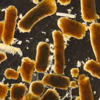
Research shows that small forage fish like anchovies can transport carbon dioxide into the deep sea--where it contributes nothing to current global warming.
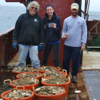
The high levels of scallop “seed” should generate significant commercial catches in three years, when the scallops are five years old.

Interview with VIMS professor Mary Fabrizio highlights a recent segment of Richmond Public Radio’s Open Source news show.
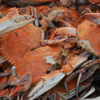
A new partnership between Virginia Sea Grant, VIMS, and the College of W&M explores whether a community-supported fishery can promote greater consumption of locally harvested fish and shellfish.

VIMS partners with the Fly Fishers of Virginia and Dominion Power to help rehabilitate disabled veterans through a unique program called Project Healing Waters.
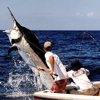
New genetic test helps ensure that U.S. seafood markets comply with regulations banning the sale of blue marlin taken from the Atlantic Ocean.
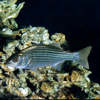
Eleven research teams from VIMS have received funding from NOAA’s Chesapeake Bay Office to study species that play an important role in the Bay’s ecology, commercial fisheries, and recreational angling.

VIMS survey reveals a strong class of young-of-year striped bass will enter the adult population in 2012. That's good news for anglers and the Bay ecosystem.
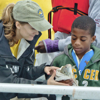
Marine recreation specialist Susanna Musick helps youngsters tag fish during annual youth-focused fishing event.
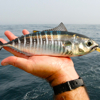
A global study by an international team including VIMS professor John Graves quantifies the threat to tuna and billfish species around the world.
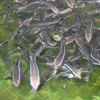
A tagged and recaptured cobia provides hope that the species could be a candidate for stock enhancement if the need arises.

Three-day meeting of the American Fisheries Society’s Tidewater Chapter brings together researchers from VA, MD, and NC.
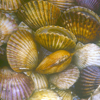
VA scallop industry provides $1.7 M to VIMS to help monitor stocks of this commercially important species.

A hardy group of recreational anglers catch, tag, and release red drum and speckled trout as part of the Virginia Game Fish Tagging Program.

Governor Bob McDonnell has appointed professors Carl Hershner and Roger Mann to state advisory boards concerned with water resources and aquaculture.
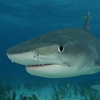
VIMS emeritus professor Jack Musick oversees a global study suggesting that 33% of shark, skate, and ray species are threatened with extinction.

VIMS' annual survey suggests that an average number of young-of-year striped bass will enter the adult population in 2011. That's good news for anglers and the Bay ecosystem.
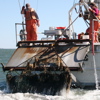
VIMS winter dredge survey shows a 60% increase in Chesapeake Bay's blue crabs since last year, reaching the highest level measured since 1997.
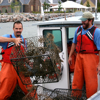
Out-of-work commercial watermen pulled up more than 9,000 derelict "ghost pots" from Chesapeake Bay and its tributaries during the second year of Virginia's landmark Marine Debris Removal Program.

A recently published VIMS study suggests that filter feeding by Atlantic menhaden has little net effect on overall water quality in Chesapeake Bay.
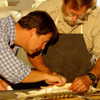
Decades of work by VIMS researchers has laid the foundation for construction of a spawning reef for Atlantic sturgeon in the James River.
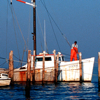
The Virginia Sea Grant Marine Extension Program is now accepting applications for funding as part of the Virginia Fishery Resource Grant Program.

VIMS' annual survey suggests that an average number of young-of-the-year striped bass will enter the adult population in 2010. That's good news for the anglers who pursue this popular game fish.

VIMS professor Wolfgang Vogelbein provides expertise to the Bermudian government concerning a recent reef-fish die-off.
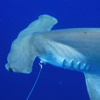
CNN reports on the VIMS Shark Survey, the longest-running study of shark populations in the world
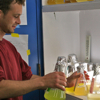
VIMS begins a new program to train the skilled workers needed to advance Chesapeake Bay’s rapidly growing oyster-farming industry.

Winter dredge survey shows that bi-State management actions are having the desired effect.

An international team of scientists including VIMS Asst. Professor Tracey Sutton resolves a long-standing biological puzzle by showing that a group of deep-sea fishes previously classified into 3 separate families are actually the larvae, males, and females of a single family—the whalefishes.

VIMS Professor John Graves has been named to the nation’s top fishery advisory body.

Study is first to show that Chesapeake Bay stripers are succumbing to mycobacteriosis.
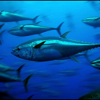
VIMS Professor Rebecca Dichkhut is using persistent organic pollutants to help measure the degree of mixing between Mediterranean and western Atlantic stocks of bluefin tuna.

Prof. John Hoenig participates in the 3rd annual Stock Assessment Meeting of the Caribbean Regional Fisheries Mechanism.

The International Game Fish Association honors Prof. John Graves with its individual Conservation Award for his groundbreaking research and management efforts in regards to billfish and tuna.

VIMS researchers ask anglers to assist with reporting the recapture of specially tagged summer flounder released in lower Chesapeake Bay.
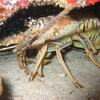
Ever tried to avoid a coworker who comes into the office with a runny nose and the sniffles? Turns out that lobsters can do you one better

Researchers at the Virginia Institute of Marine Science are holding an extremely rare type of crab that was pulled from the Chesapeake Bay last month by watermen David Johnson and Robert Watson of Deltaville.

Researchers send a 5-foot sturgeon to a spawning facility in Maryland in an effort to help restore Chesapeake Bay's sturgeon population.

Researchers at the Virginia Institute of Marine Science continue to investigate last week's fish-kill event, in which observers reported hundreds of dead and dying adult menhaden in several Peninsula waterways. The researchers have so far discovered no conclusive evidence as to the cause of this relatively small event.